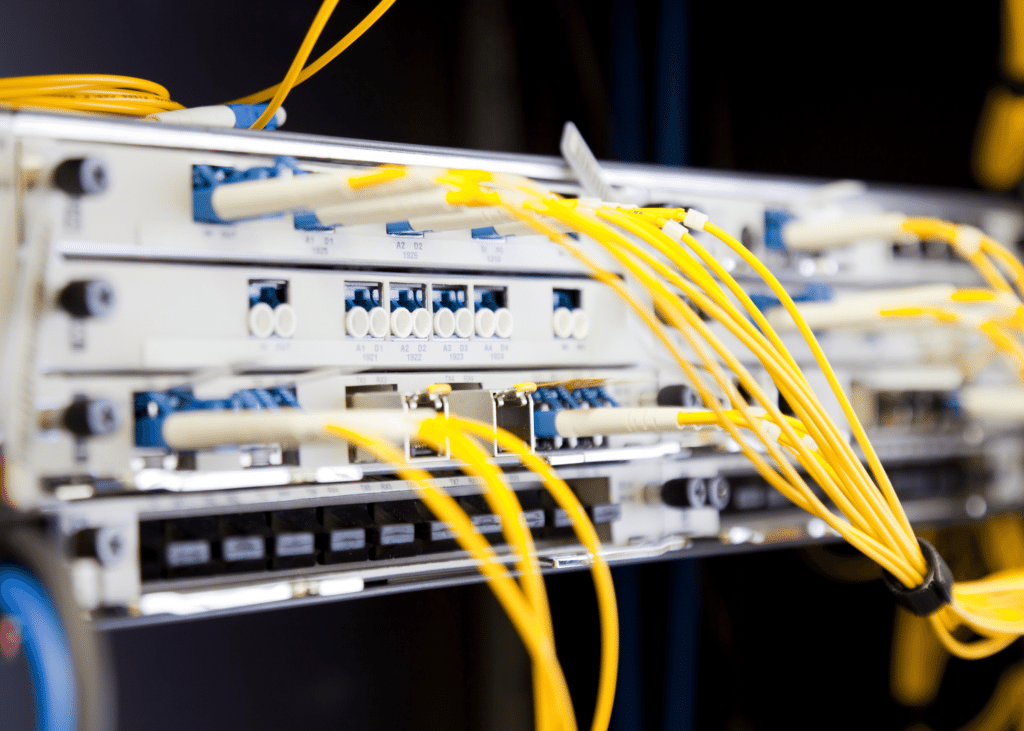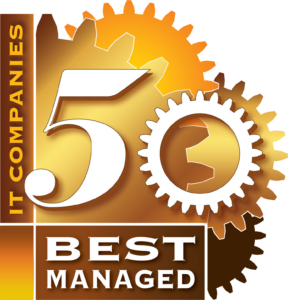
Solutions For Your Top 5 IT Challenges in Manufacturing
Solutions For Your Top 5 IT Challenges in Manufacturing
What are the top five IT challenges in manufacturing?
We work with a lot of manufacturing companies and we see the challenges that they deal with.
1. Tracking Good Data
A lot of manufacturing businesses start out with an overall understanding of how long it takes to manufacture a product, or what the production system looks like. But in reality, what they lack is hard data on what’s really happening. This makes the primary challenge of understanding how to collect and track good data regarding productions and processes.
The first problem we find is how do I gather data in order to know what’s happening on my production floor? And the solution for this is a manufacturing execution system or an MES system.
How to Gather Data with a MES system
This simple system records when a piece of work starts and ends by placing a terminal setup at a workstation. When workers begin a job, they push a button, and they push it again to end the job or when the work is done. Now we have data on how long it took to perform a particular task.
Let’s say you have 15 machines and you want each of these expensive pieces of machinery running as many hours a day as possible.With more moving parts comes even more sophisticated algorithms that can optimize the machine usage.
Sometimes, with different processes for different product lines, it’s difficult to organize that and ensure minimum downtime. Sophisticated MES systems can help with that.
2. Bridging Legacy Systems
The second challenge a lot of manufacturing businesses face is, how do I begin?
They might have existing legacy systems or existing management systems, or ERP systems, within the business. Those systems may not have built-in MES components.
Replacing an existing ERP is a long task, but you can purchase standalone MES systems and bridge them through bots and integration tools. These make sure that the data is actually being displayed and is visible, even if your current legacy system doesn’t necessarily support MES systems. This becomes the solution to starting the collection of data within the manufacturing process.
There are related IT challenges considering legacy hardware is sometimes involved. You could have a machine on a plant floor that costs hundreds of thousands of dollars, and the IT capabilities in that machine are quite old and they can’t be updated. It can be challenging to integrate those, but there are solutions to that. Maybe a bridge needs to be built, but it is possible to get those connected as well.
Let’s say you’re a manufacturer choosing an ERP, or a whole business management system, from scratch. One of your main deliverables, as you search for that software, would be what sort of manufacturing execution systems does it incorporate.
But if you already have an ERP, then we work on ways to make sure the data is captured properly with the client, even if it’s a legacy system.
3. Execution and Wireless Connection
Once you decide that you need to gather manufacturing data, and that you need to leverage IT in the manufacturing environment to maximize efficiencies, sometimes you have some physical issues.
Very large buildings, for example, have challenges with wireless access. When you deploy technology in a manufacturing sector, typically a lot of times you’re relying on small handheld devices to begin and end work.
Further, a lot of times you rely on mobile devices, specifically if you’re doing inventory. And when you fill a manufacturing facility with raw materials or a distribution facility with inventory, that has a significant effect on your WiFi.
The WiFi signal that you thought was good when the building was empty suddenly isn’t good when the building is full of raw materials or products. So sometimes there’s a physical challenge to implementing IT in a manufacturing environment.
Install a Mesh WiFi System
Modern mesh WiFi systems ensure that you have complete coverage of your manufacturing facility. They facilitate the use of technology like handheld devices, even when your building is full of inventory or raw materials.
This however requires planning and a team that understands the complexity of the current and new systems to be put into place. Without planning this solution, handheld devices can cause delays due to errors or units not working in certain areas.
4. Acceptance of Modern Technology; Overcoming Pushback of New Processes
Another common problem is just accepting new technology. A lot of times, when you introduce technology in a manufacturing environment, you get pushback. Why are you suddenly recording what I’m doing and why I’m doing it?
A mistake some businesses make is introducing a manufacturing execution system to record the beginning and the ending of jobs without properly informing the staff of the reasons why.
It’s not an exercise in catching someone not working fast enough. It’s an exercise in understanding what’s really happening and getting data so that we can adjust processes if we need to. You’re looking for efficiencies that are probably there already. But without data, they’re difficult for someone in an office separated from the environment to fully understand.
So when you roll out technology in a manufacturing environment, one of the most critical early steps is explaining and making sure that supervisors and employees in that environment understand why we’re doing this. Explain what the goals are, what you’re trying to achieve, and how it benefits the organization as a whole. So communication is fairly critical in rolling out any technology in a manufacturing environment.
IT Challenges in Applying the Data
Often time executives are challenged to understand what problem they are trying to solve. And the problem can be simply, we have a lot of assumptions about how things move through our building, and we need some data to prove whether those assumptions are correct or not.
Let’s say that you need to reduce costs in a certain way. You can’t really know what to change until you have really accurate information as to what’s happening in the manufacturing environment. Understanding what you’re trying to do with the data is an important early step. When you have sophisticated data sets without the tools to analyze them, you’ve then lost the investment and time used to collect the data.
The solution to that is proper planning during the initial execution phase of a manufacturing system. You need to understand what you’re trying to solve by introducing technology in that environment.
5. Secure Access for Outside Vendors
It’s very common for a manufacturing facility to have the day’s work pre-staged programmatically by outside vendors. They come in remotely and literally prepare the manufacturing environment for that day’s work. Some outside vendors come in and perform a given task every day in some extreme cases.
That’s a serious security risk if you just open ports in your firewall and let people come in. It’s probably not top of mind when they roll out MES systems, but it’s certainly on the top of our mind when someone says a vendor needs access to a cutting machine on a factory floor. Our first thought is that getting them access is easy, but getting them secure access is different.
Finally, it’s quite common for sophisticated machines to require outside vendors from the organization to directly connect to the machine. They may have to prep the machine for a production run, service the machine, or gather data from the machine.
These generate more IT challenges, especially security concerns, when you introduce technology to manufacturing environments.

From an IT perspective, that involves granting the vendor outside access through the IT systems to touch the machine and program the machine and do that in a secure manner. So when we configure access to machine floors, required access, by vendors to machines, we make sure that the connection is a secure VPN connection from the outside vendor into the environment.
Even if you introduce an MES system and reap the benefits of the visibility it gives you into your manufacturing processes, you can’t sacrifice security in the name of efficiency.
Are you struggling with one or more of the top five IT challenges in manufacturing? Click here to contact us and find out how we can help.



